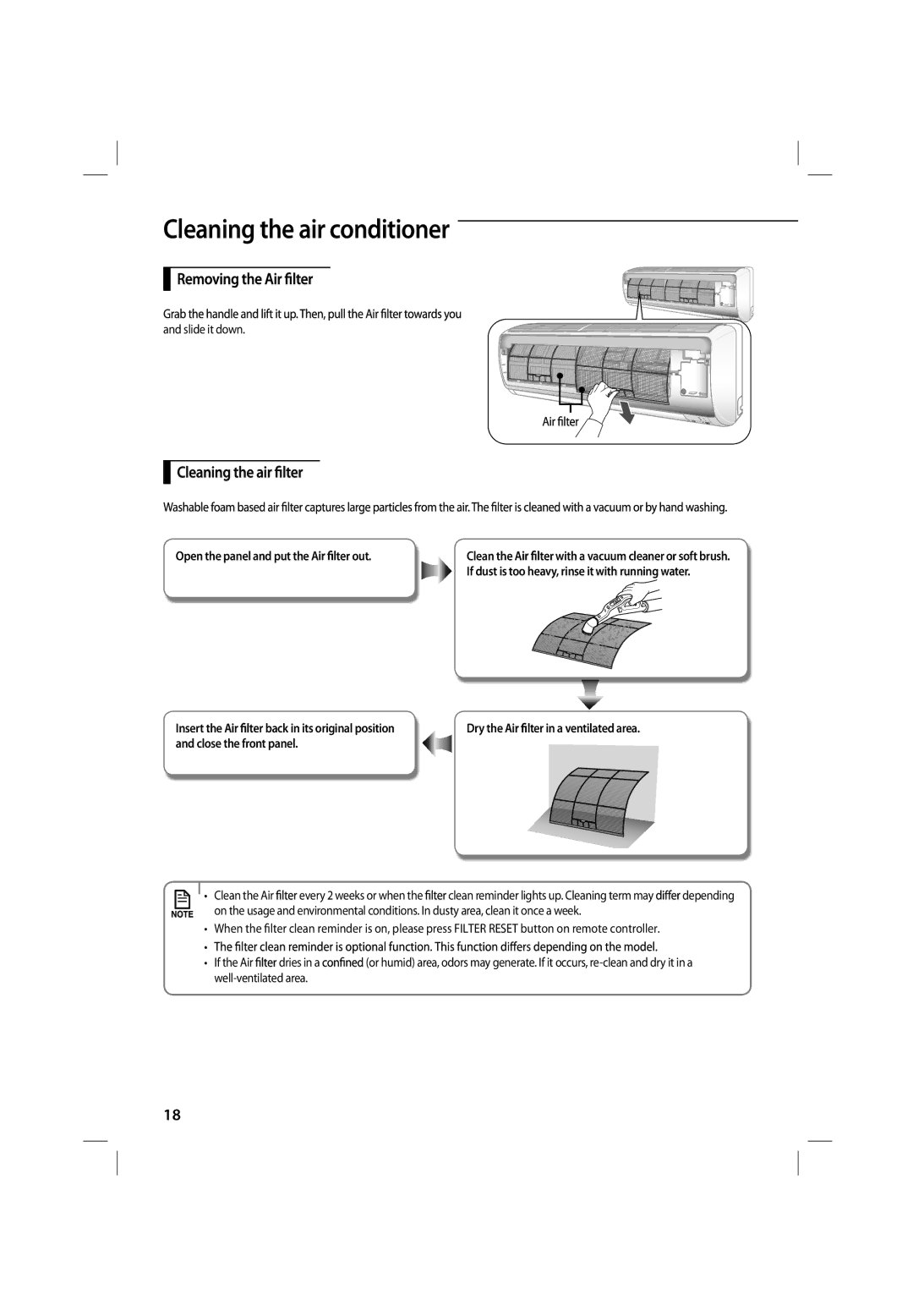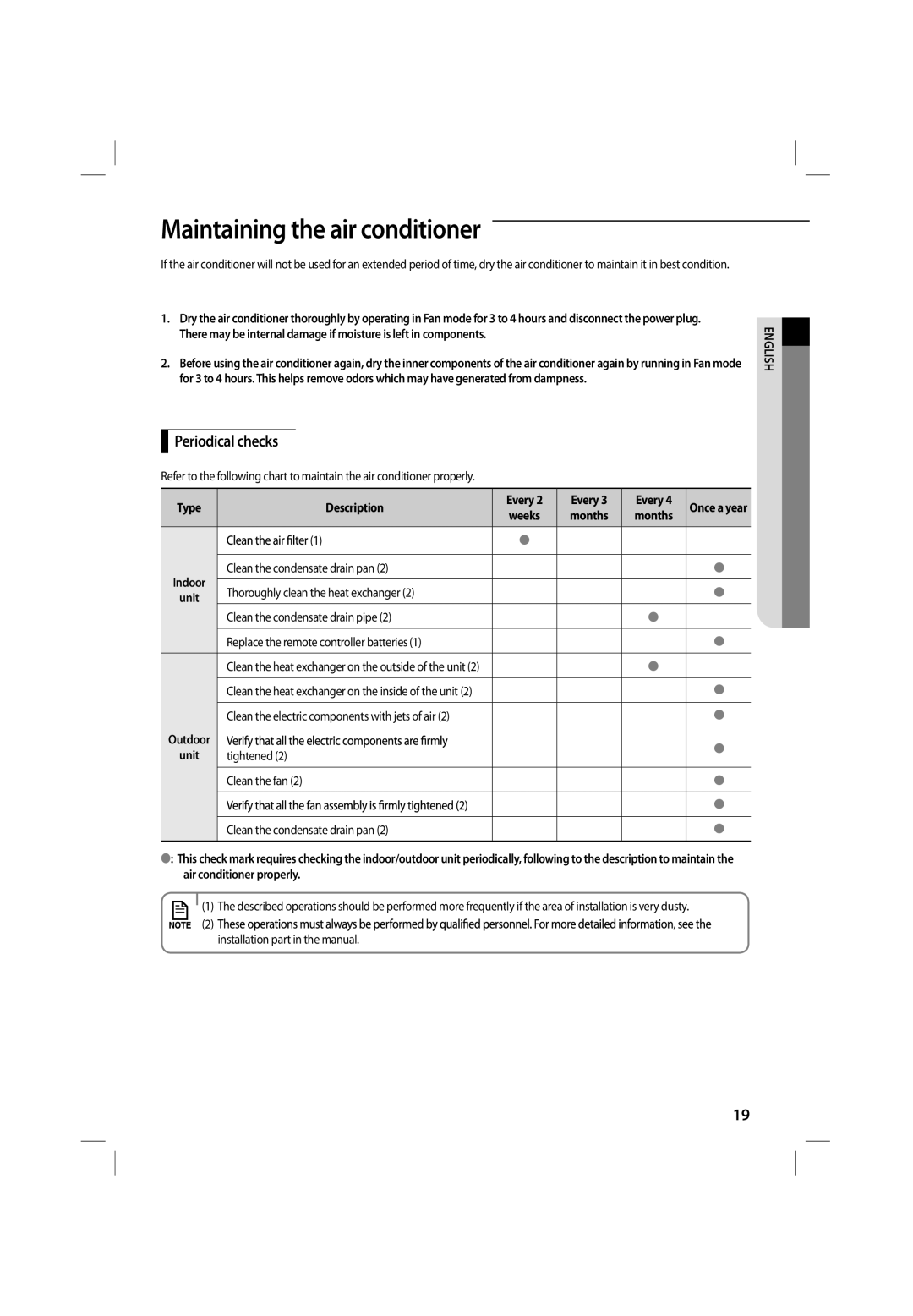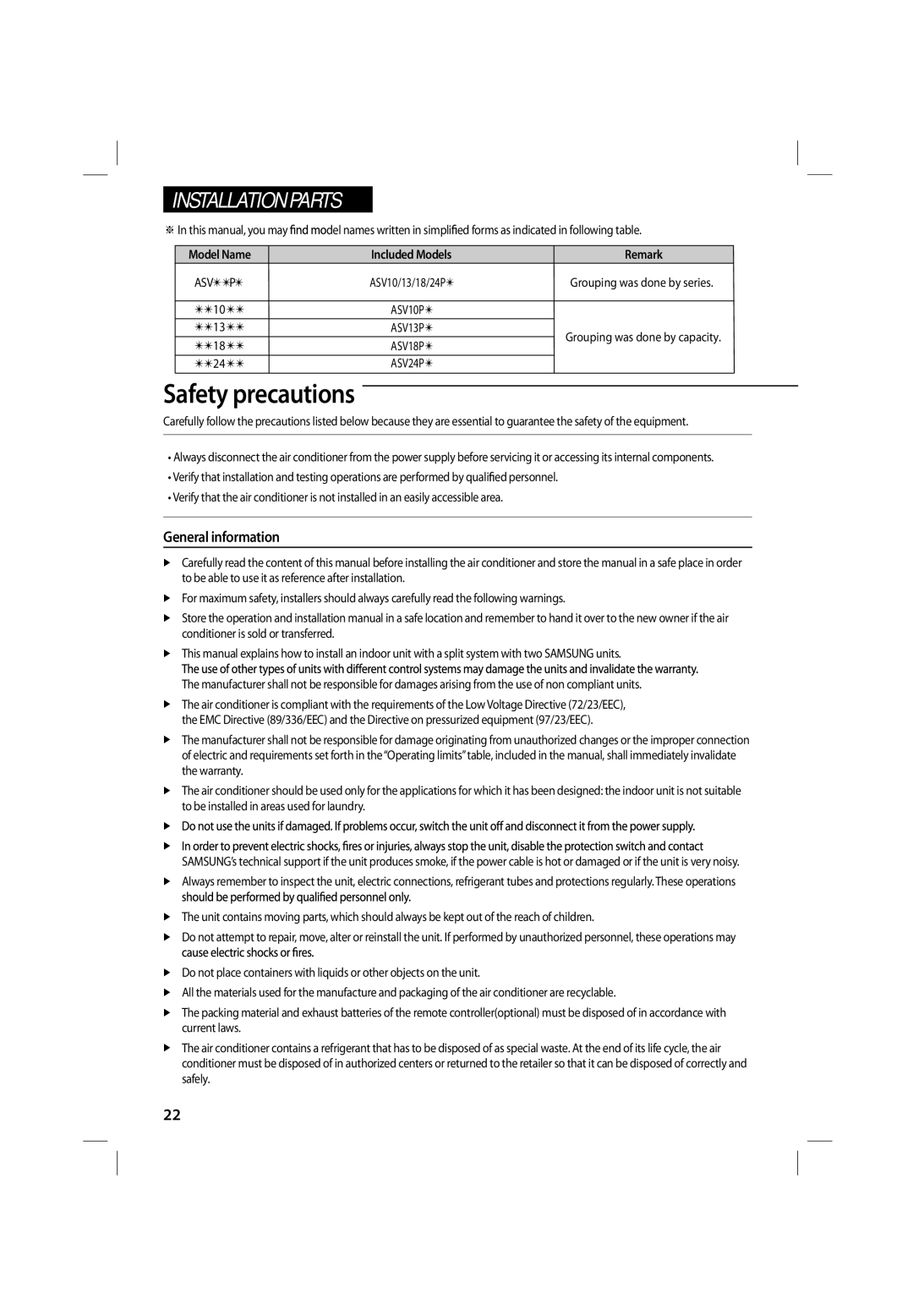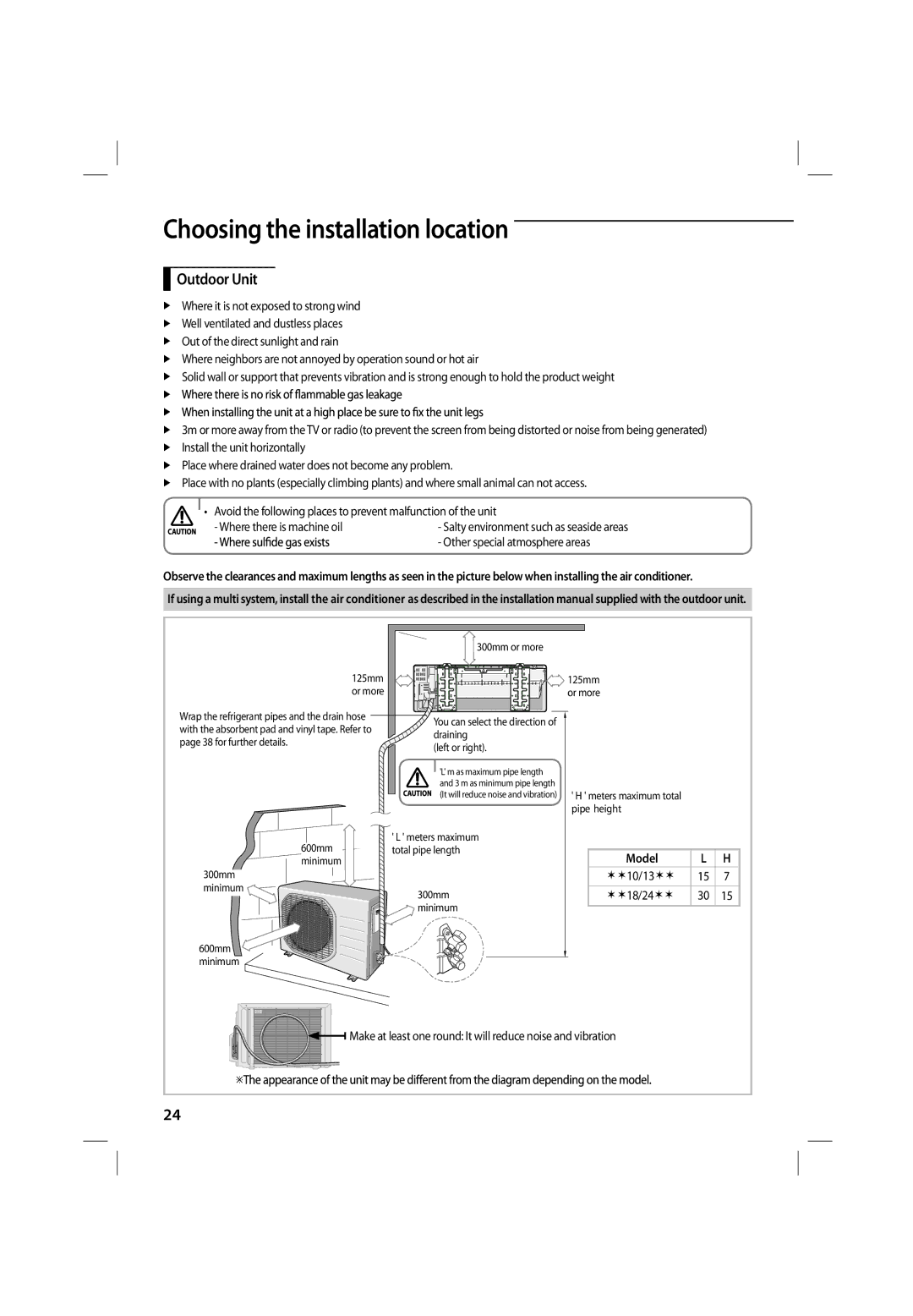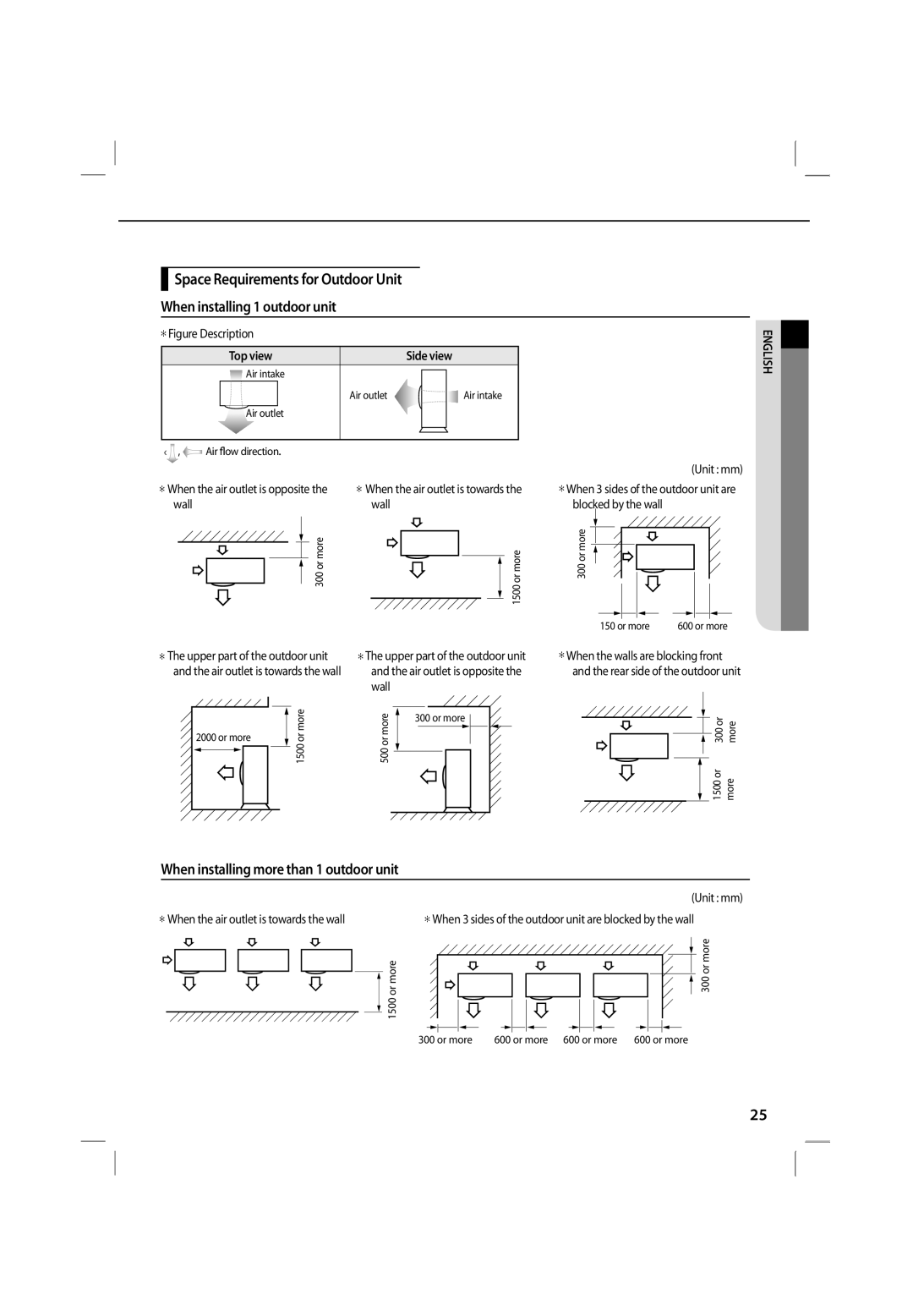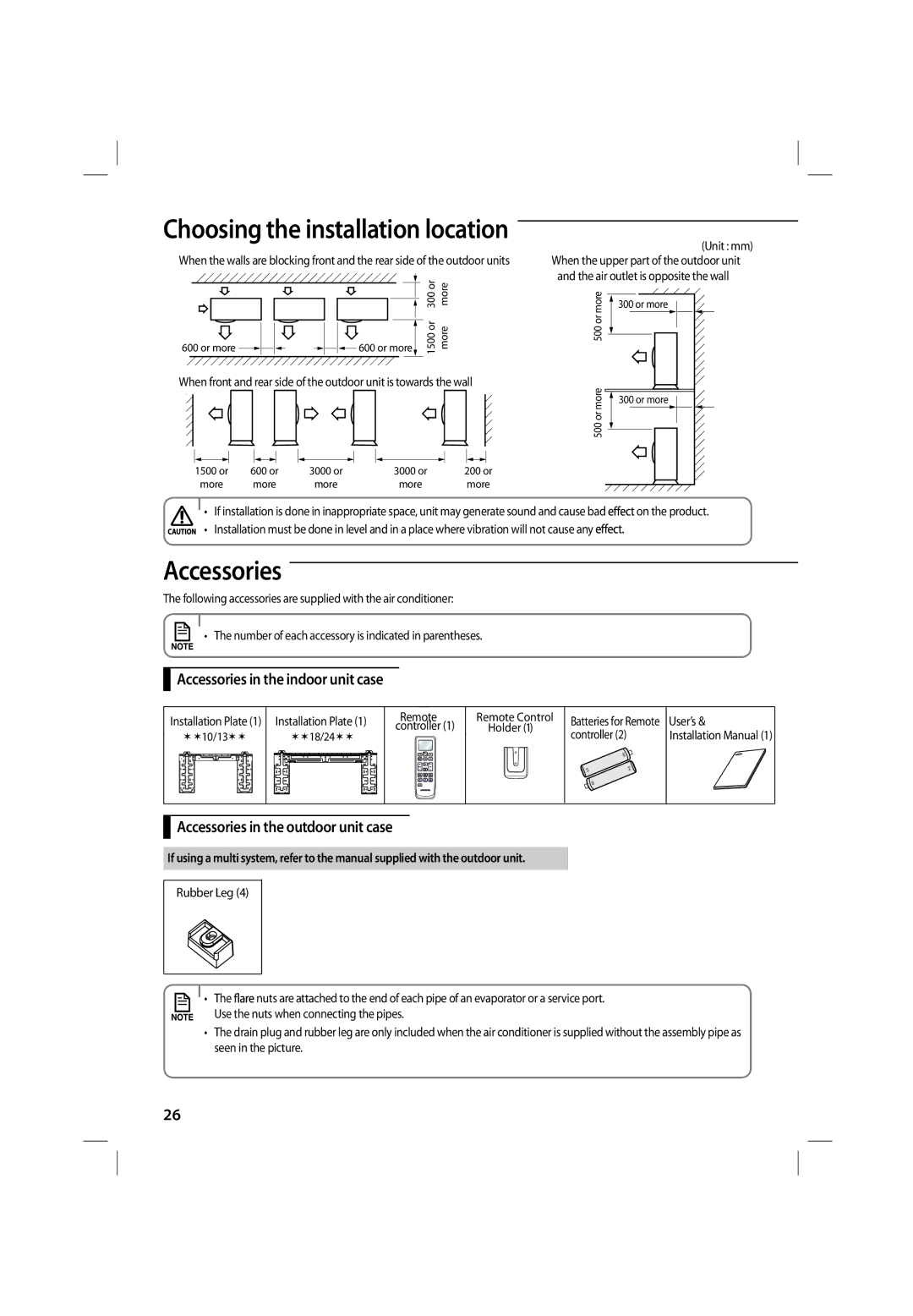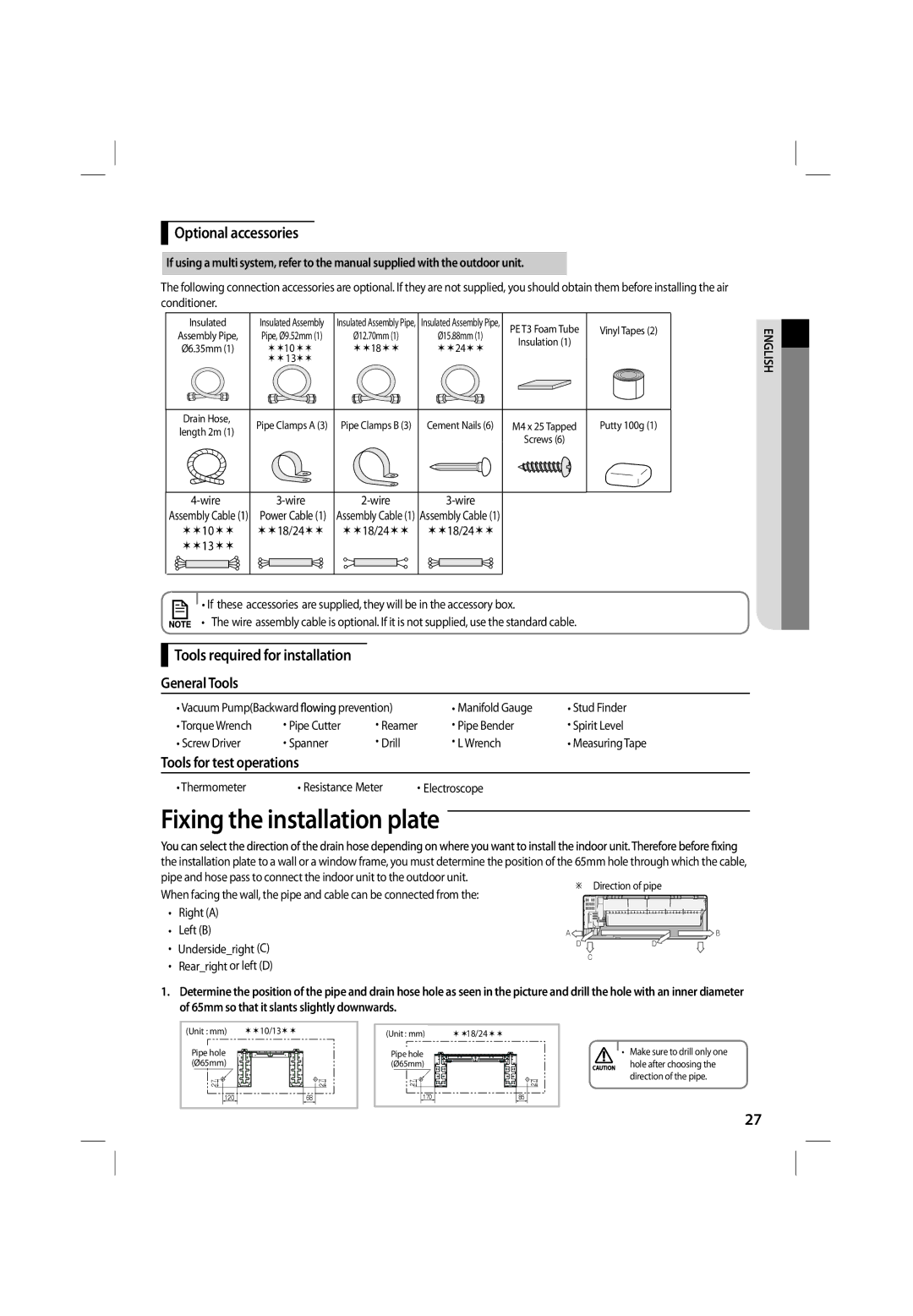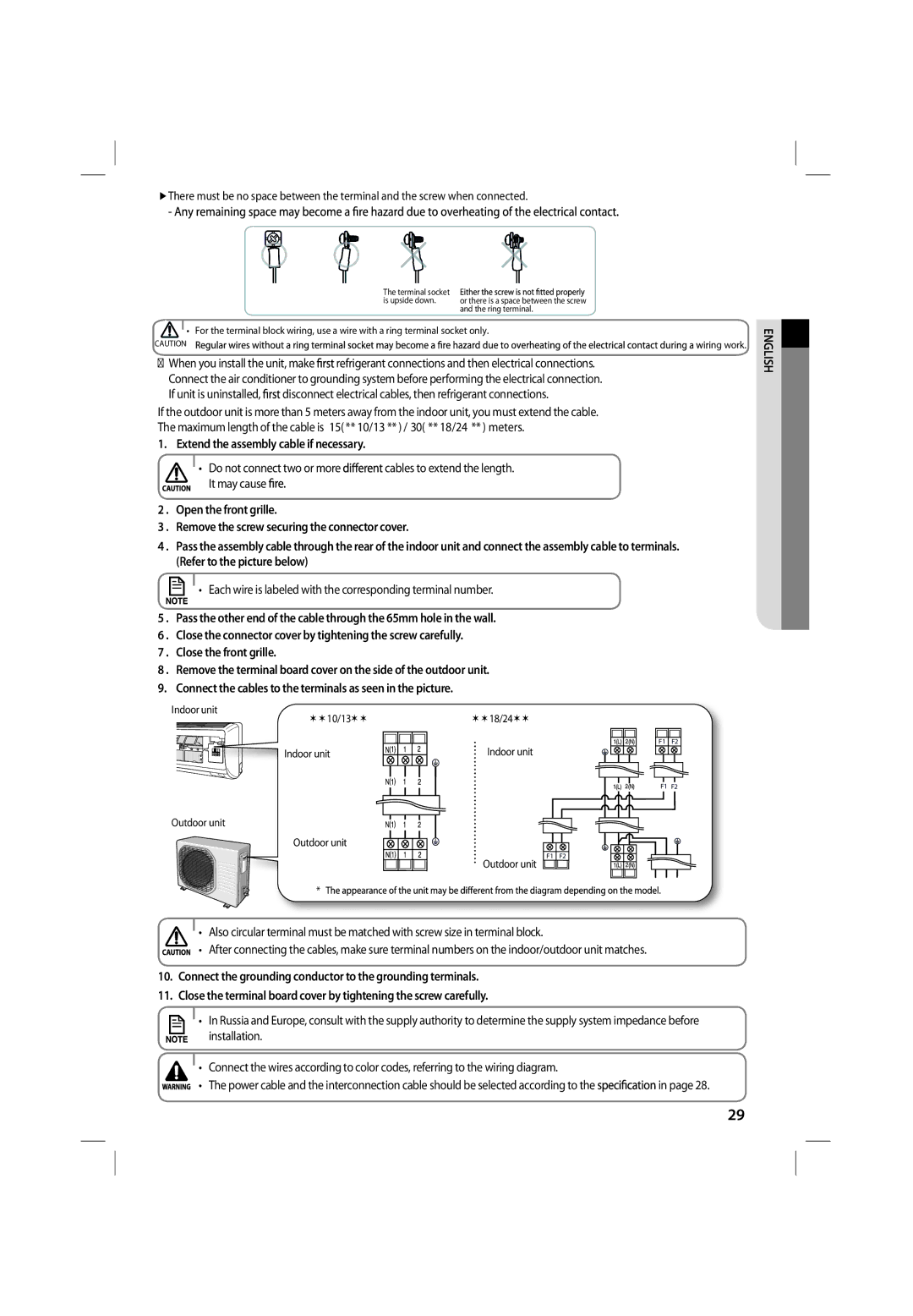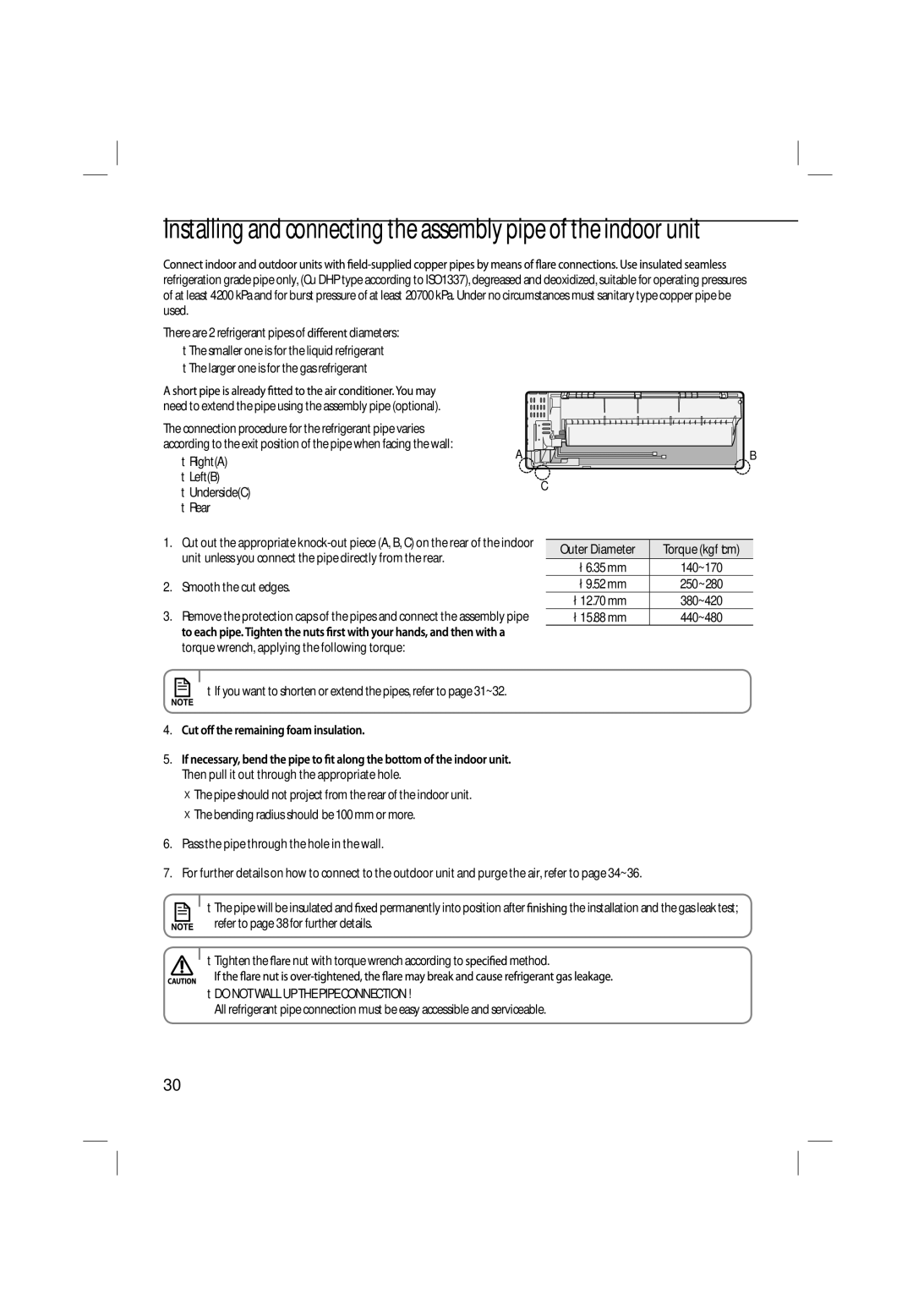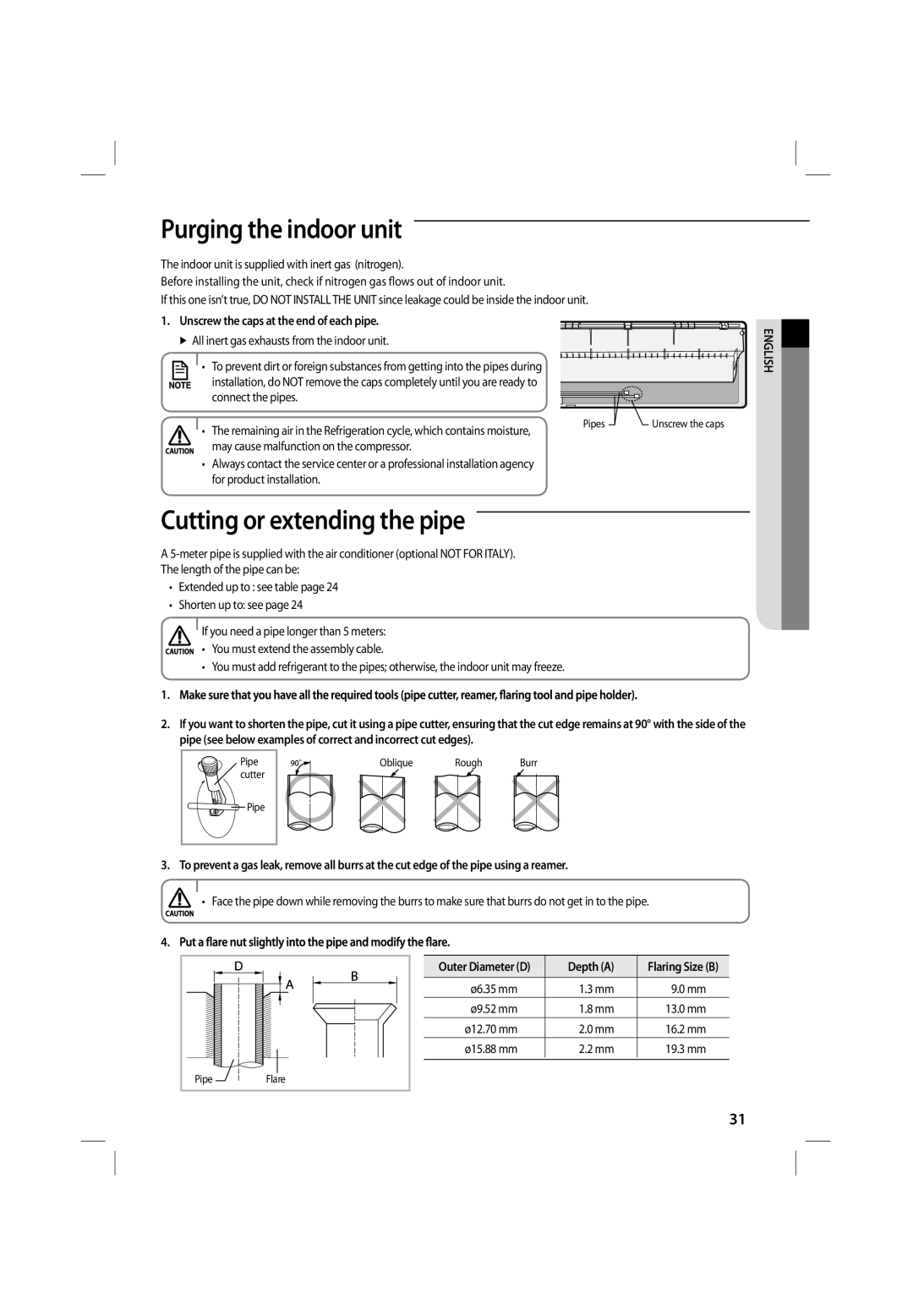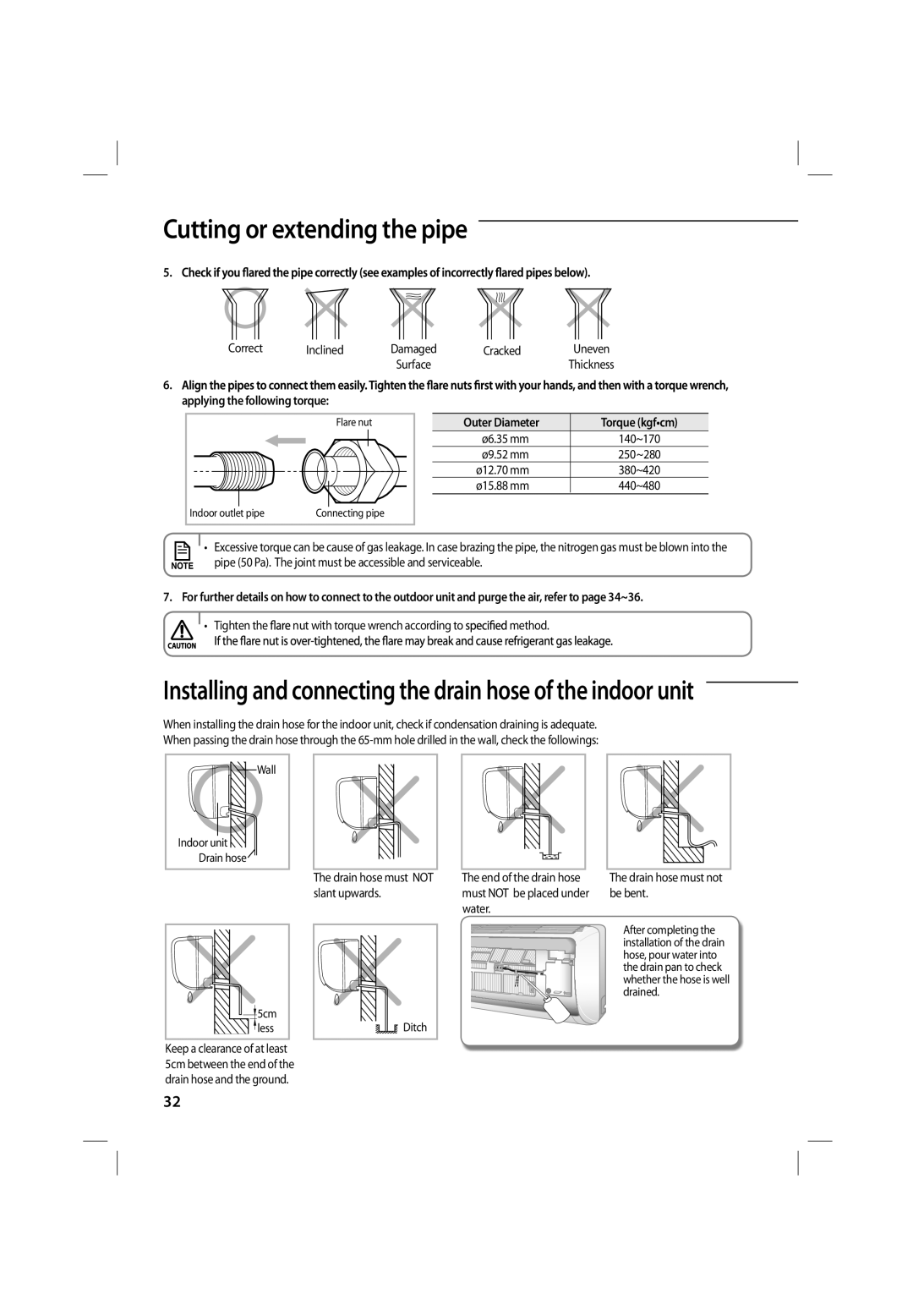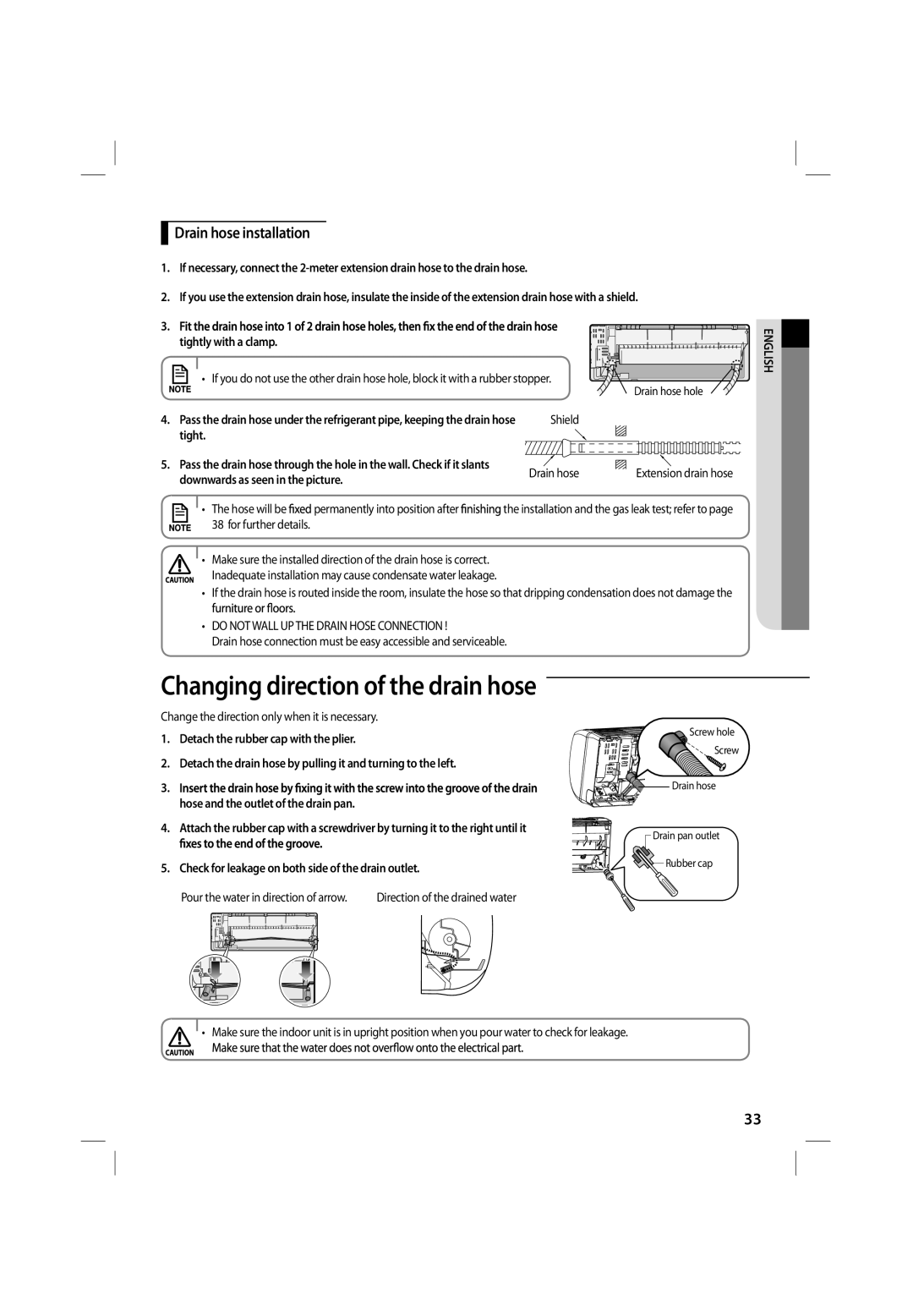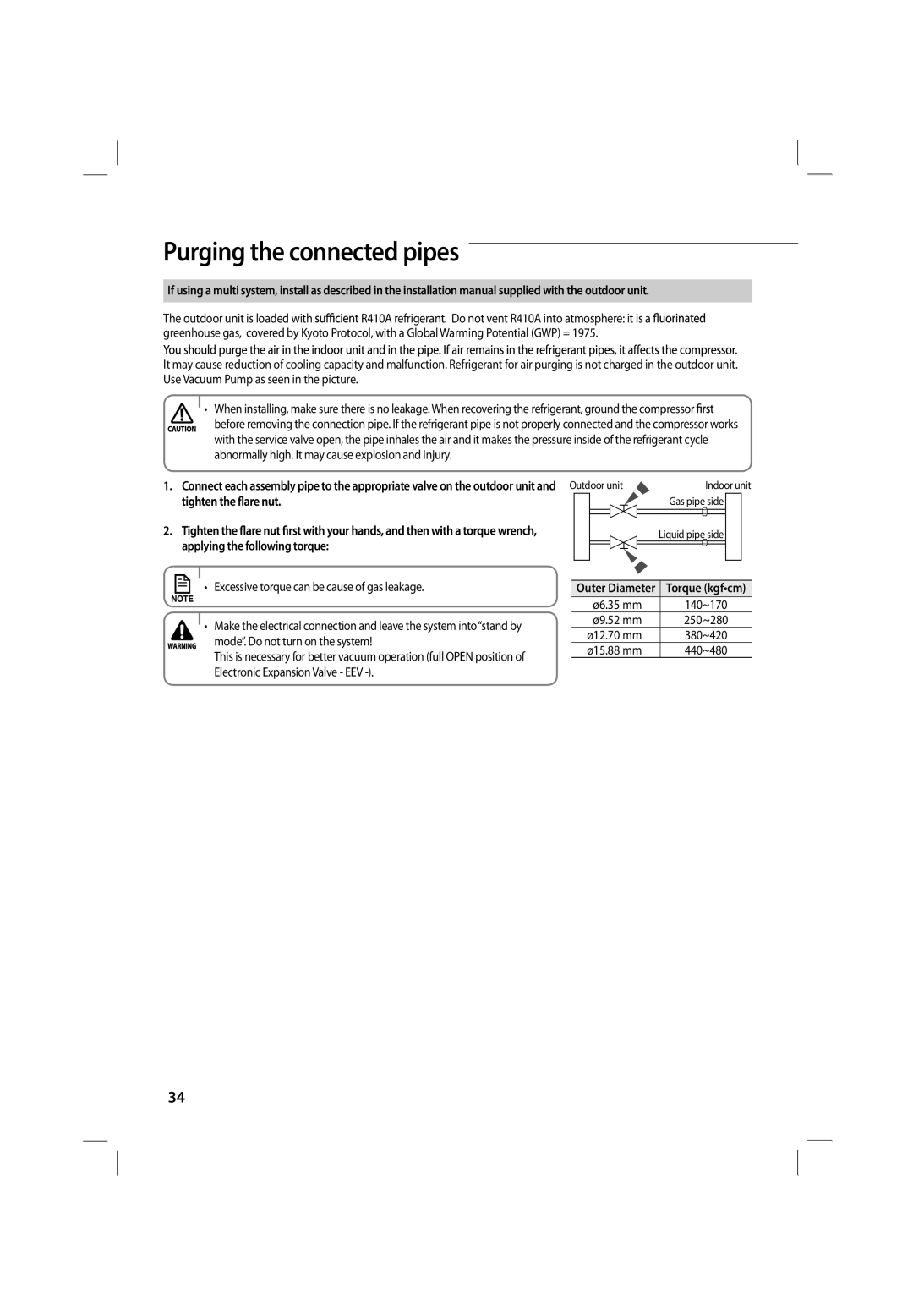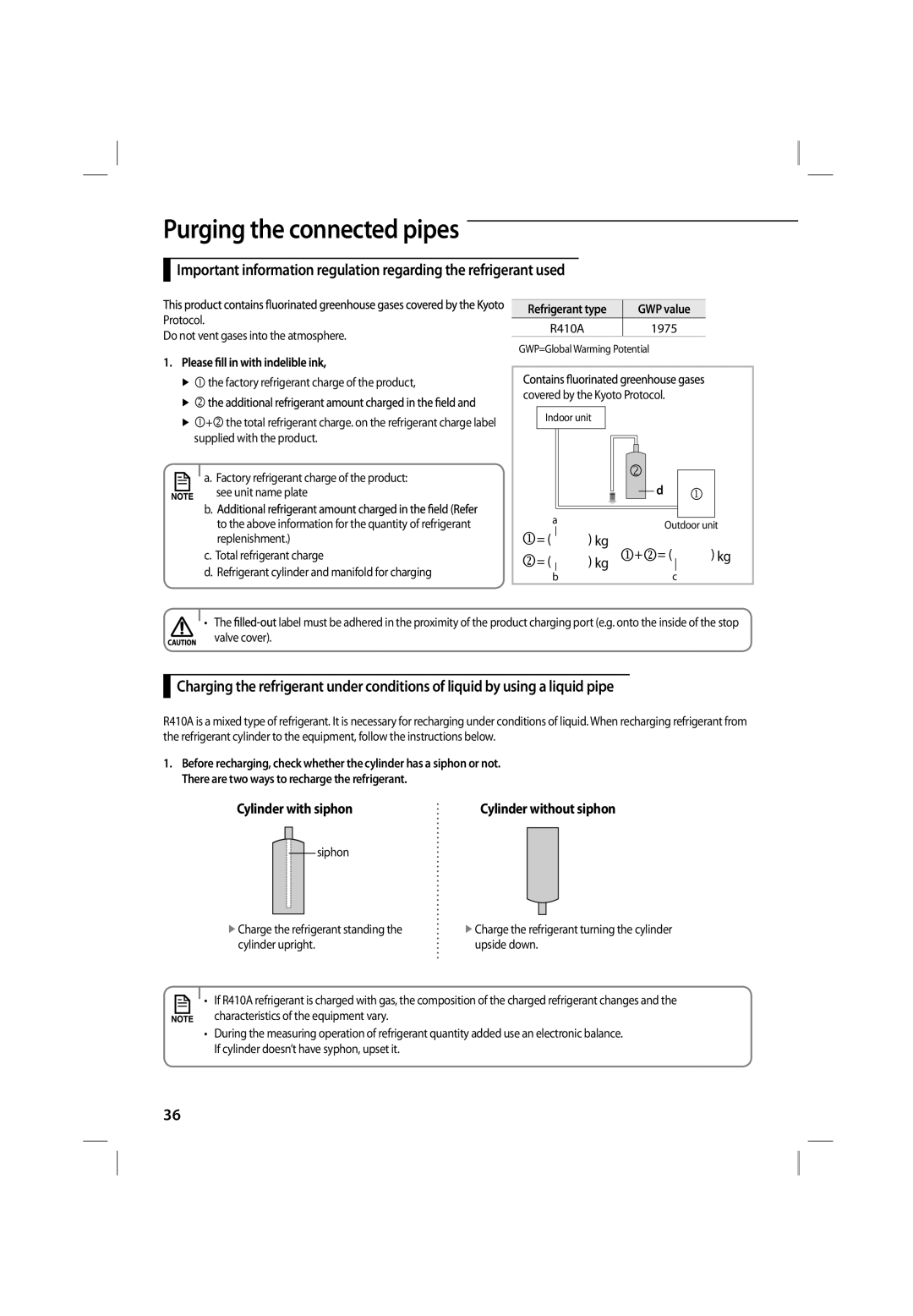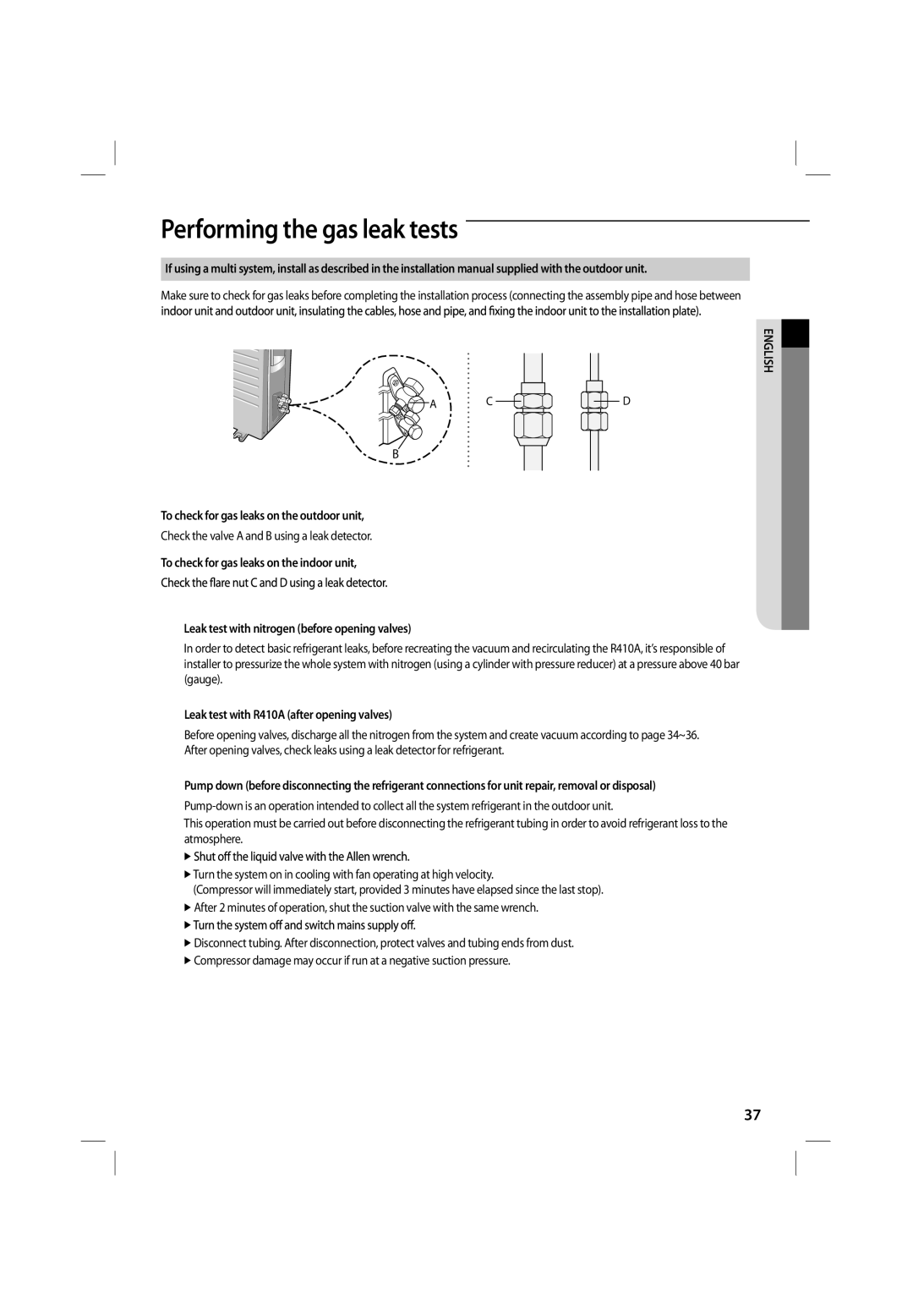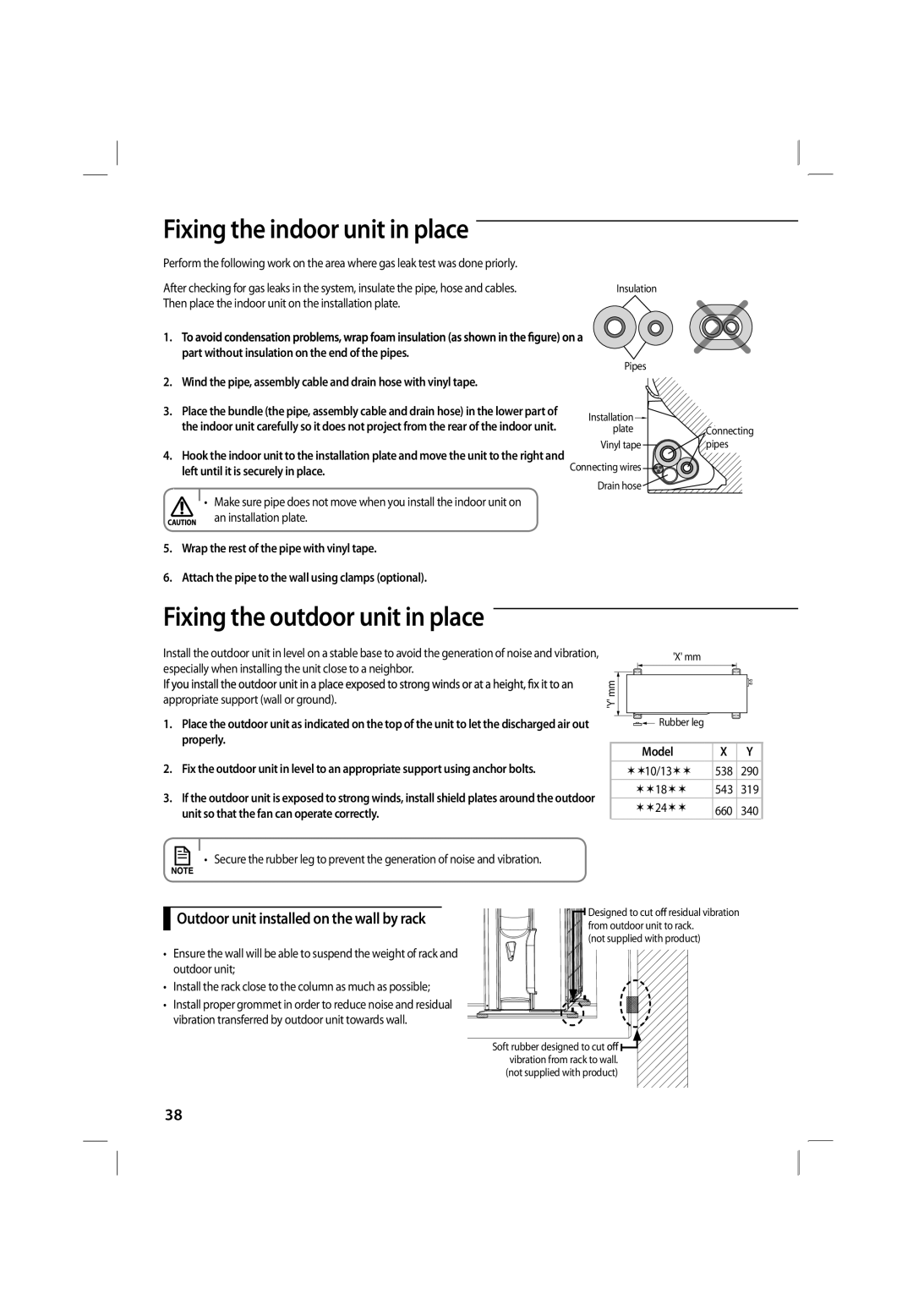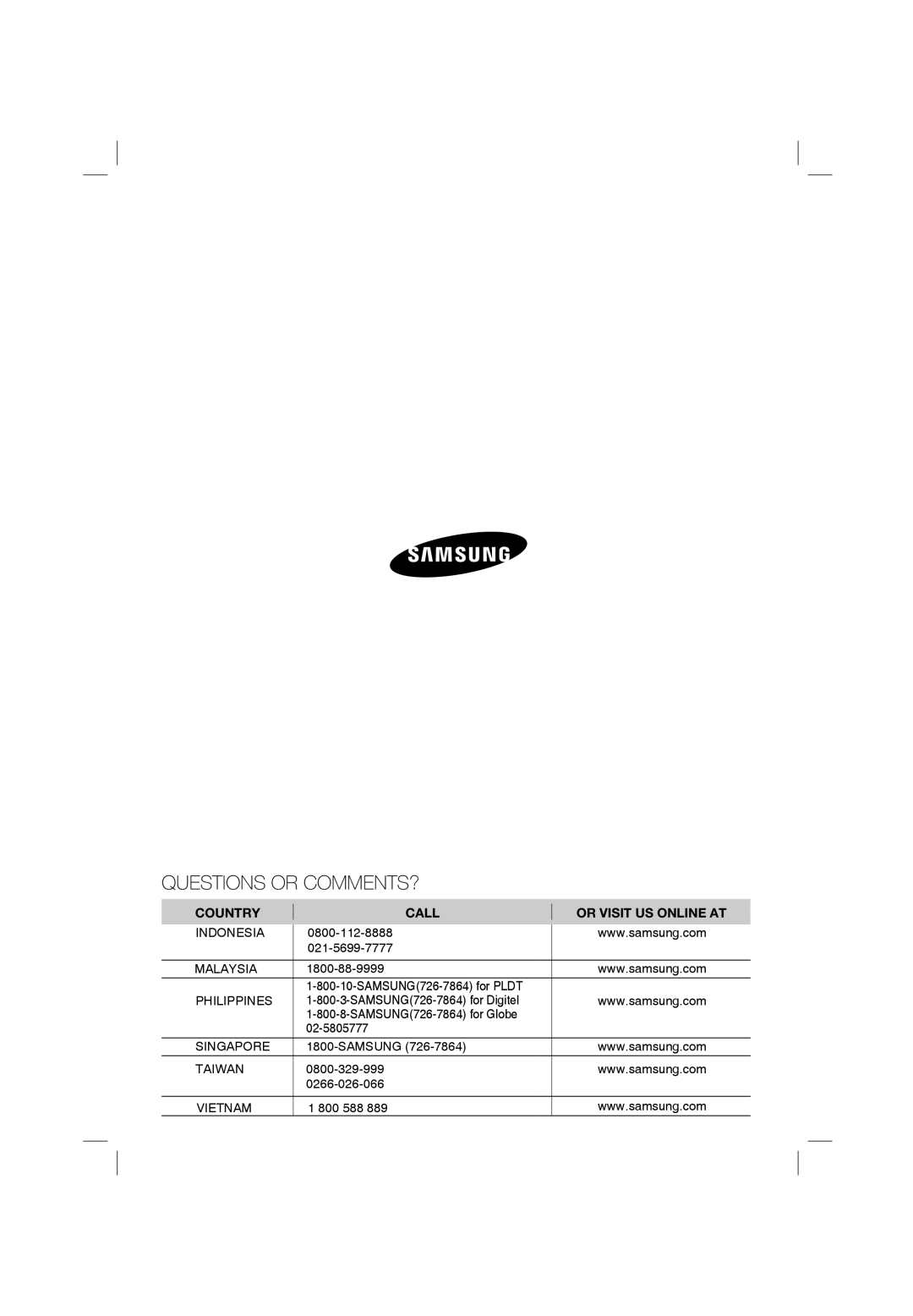
Purging the connected pipes
![]() Important information regulation regarding the refrigerant used
Important information regulation regarding the refrigerant used
Protocol.
Do not vent gases into the atmosphere.
1.
the factory refrigerant charge of the product,

+the total refrigerant charge. on the refrigerant charge label supplied with the product.
a. Factory refrigerant charge of the product: see unit name plate
b.
to the above information for the quantity of refrigerant replenishment.)
c.Total refrigerant charge
d.Refrigerant cylinder and manifold for charging
Refrigerant type | GWP value |
R410A | 1975 |
GWP=Global Warming Potential
covered by the Kyoto Protocol.
Indoor unit
|
|
|
|
|
|
|
|
|
|
|
|
|
|
|
|
|
|
|
|
|
|
|
| |
|
|
| ||
|
|
|
|
|
|
| |||
a |
|
|
| d |
| |
| ||
|
|
|
|
| |||||
|
|
|
|
|
|
| |||
|
|
| Outdoor unit | ||||||
= ( |
|
| ) kg |
|
|
| |||
|
|
|
| ||||||
= ( |
|
| ) kg += ( |
| ) kg | ||||
|
|
| |||||||
b |
|
|
|
| c | ||||
•The![]() label must be adhered in the proximity of the product charging port (e.g. onto the inside of the stop
label must be adhered in the proximity of the product charging port (e.g. onto the inside of the stop
valve cover).
![]() Charging the refrigerant under conditions of liquid by using a liquid pipe
Charging the refrigerant under conditions of liquid by using a liquid pipe
R410A is a mixed type of refrigerant. It is necessary for recharging under conditions of liquid. When recharging refrigerant from the refrigerant cylinder to the equipment, follow the instructions below.
1.Before recharging, check whether the cylinder has a siphon or not. There are two ways to recharge the refrigerant.
Cylinder with siphon | Cylinder without siphon |
![]() siphon
siphon
Charge the refrigerant standing the cylinder upright.
Charge the refrigerant turning the cylinder upside down.
• If R410A refrigerant is charged with gas, the composition of the charged refrigerant changes and the characteristics of the equipment vary.
•During the measuring operation of refrigerant quantity added use an electronic balance. If cylinder doesn’t have syphon, upset it.
36
